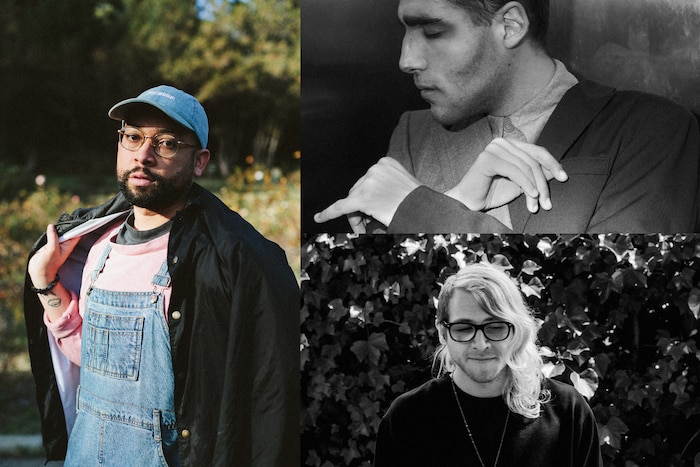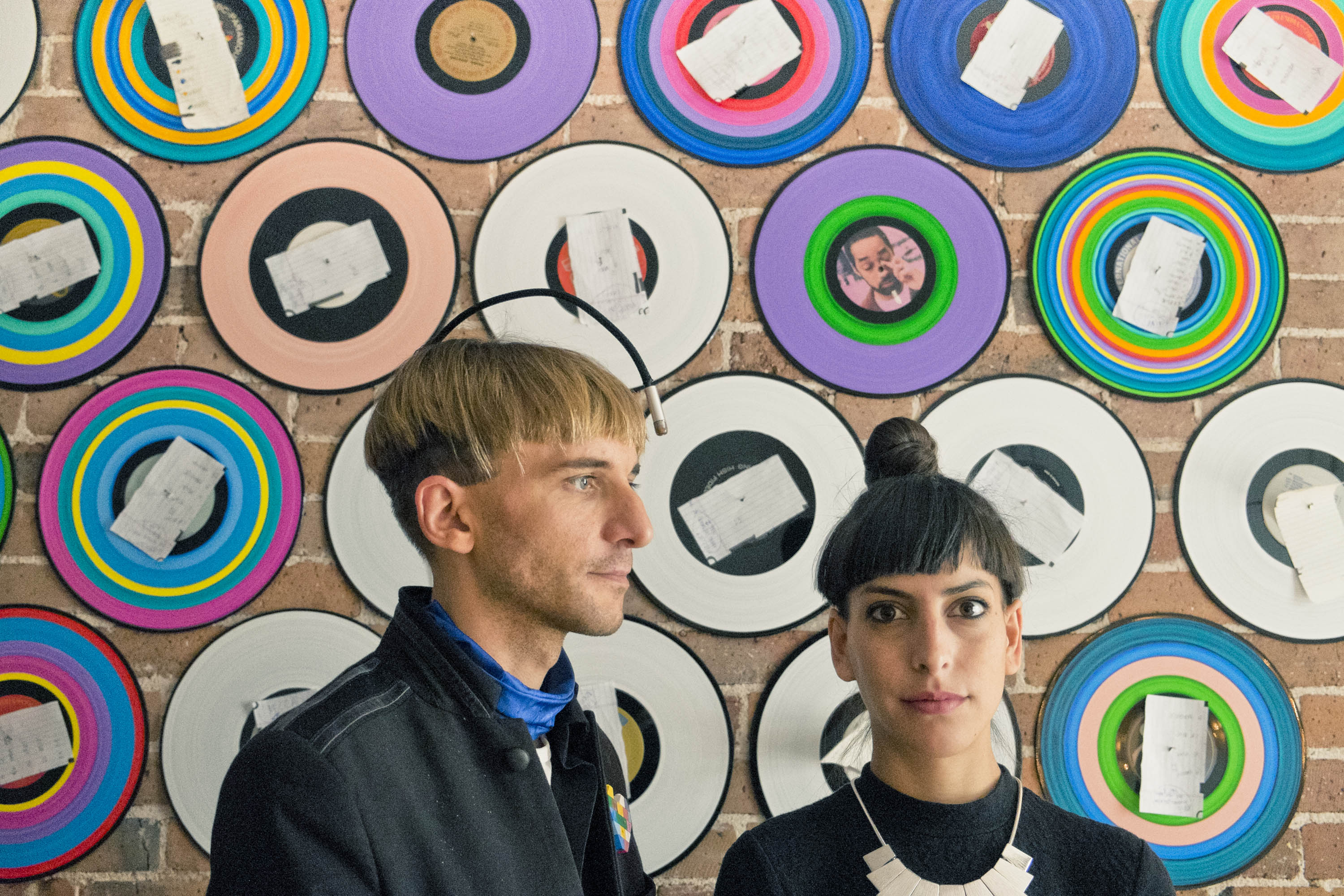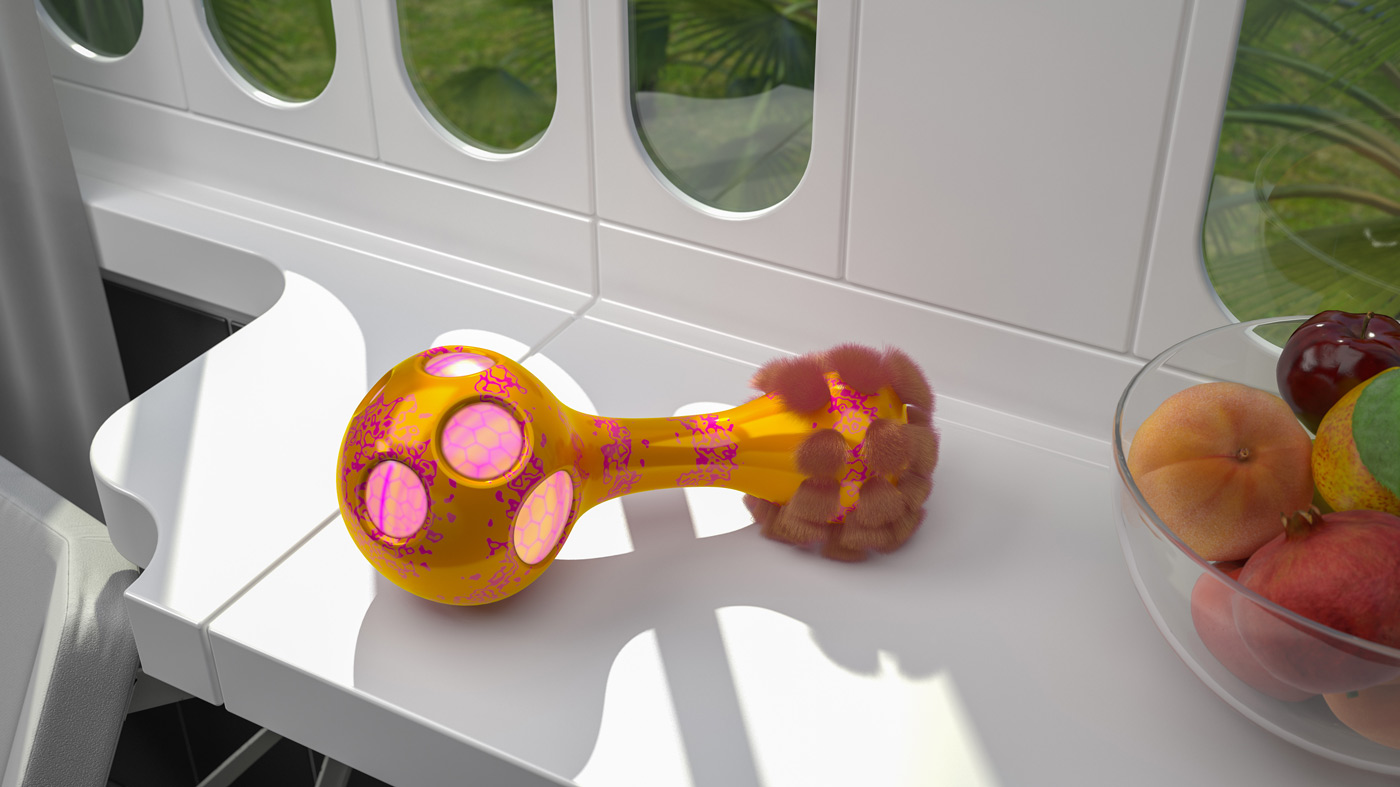Nonbinary Voices and Dance Music’s Expanding Expressivity
Marke B. on the intertwined concerns of identity and technology for artists pursuing nonbinary modes of production

“I think in a culture that’s now so straight, white and male, they’re starting to be more curious about us – because they’ve run out of shit to talk about,” Honey Dijon said last year during a talk with DJ Sprinkles and Juliana Huxtable called “Between 0 and 1: Remixing Gender, Technology and Music.” “There’s only so many techno records you can make and talk about the same fucking people. But I think if that helps open the door then I’m all for it... The world was never all binary and the world was never all straight, but we’re still having a lot of conversations as if it was.”
Dijon was talking about her experience as a black trans woman in the dance music industry and the importance of telling her story to help reclaim dance music’s diverse, queer roots. As Sprinkles points out in another interview, identity can directly and indirectly influence one’s choices in the studio. “All of my old electroacoustic releases, like on Mille Plateaux, were very much about finding processes for production that somehow reflected queer and trans experiences – if only metaphorically. Like, the heavy use of audio samples as a way of avoiding ‘originality’ or ‘authenticity’ in the music, which mirrored my attempts to complicate notions of originality or authenticity in relation to my own sexuality and gender. Or developing compositional techniques like systolic composition and framing.
“The emphasis on tape-based production – in relation to both electroacoustic and DJ cultures – has also always been meaningful to me as a rejection of stage-based performance, rock posturing and that whole hetero-male-giving-birth-to-the-world history of creativity under patriarchy,” Sprinkles says. “What is really at issue is economic exclusion within the more funded levels of audio marketplaces.”
Through the persistence, outspokenness and challenges to mainstream thinking of Sprinkles, Dijon and others, women and queer and trans people are reclaiming access to the worldwide dance music scene. Transgender producer Sophie and “proud bottom” Arca play major festivals and command press attention. Moogfest 2018 announced its lineup with a 50-hour livestream of women, nonbinary and trans artists. The global gay techno underground, built mostly in the 2000s to support fellow artists, surfaces regularly at crucial clubs like Berghain, Smart Bar and Output, while festivals like Tuffest in Seattle and Whole in Gräfenhainichen focus on female, nonbinary and trans performers.
While their projects, practices and backgrounds are different, these emerging artists are united by their expansion of the expressive capabilities and inclusivity of dance music.
Now, in turn, more nonbinary and genderqueer voices are also beginning to be heard, as support systems expand to nurture community and feature their work, adding new colors and perspectives to the music’s ever-shifting kaleidoscope. And while their projects, practices and backgrounds are different, several of these emerging artists are united by their expansion of the expressive capabilities and inclusivity of dance music.
“For so long, pounding techno has been associated with straight male anger. When you look up and see someone different doing it, it’s liberating,” says Madi Levine, a producer from Seattle who identifies as nonbinary and who performs and produces under the name IVVY. They were speaking at a picnic table at the Gays Hate Techno gathering in northern California, an annual, all-gender weekend showcase of queer techno talent that included artists like Gayphextwin, Adab, Piano Rain and Experimental Housewife. The gathering aims to serve as a vital networking opportunity: Non-gender-conforming people can often lack the same access to hardware, training and booking and distribution networks as their peers, so making space to share gear knowledge and grow an essentially DIY scene is crucial.
IVVY’s hour-long live set was relentless but somehow supple, wrung out of an uncluttered set-up consisting of a laptop, a Waldorf Rocket synthesizer and an Maschine MK1 drum machine. The pummeling beats would not have been out of place at Gegen, Berlin’s underground queer party that features hardcore techno.
“The aesthetic of harder techno works for someone in our position because of course you’re frustrated, feeling oppressed, and you have a lot to say about what’s going on in the world and personally,” says IVVY. “That’s easy to put into angry-sounding music because you can get it off your chest. It’s a combination of catharsis and escapism, being somewhere else where there’s nothing to worry about. But there’s so much more to say, so many more textures and possibilities with making heavy music beyond that.” IVVY talks about the emergence of a harder sound among many of their contemporaries, and how that’s creating a particular idiom for queer dancefloors. “There’s a celebratory element to harder music, it’s becoming more about expressiveness, about us being together and filling a space with this unique energy. It’s about saying, ‘People in our vein are making this music, this is it, so buckle up.’ But it’s still saying, ‘It’s okay to be mad about the things that are worth being mad about.’”
IVVY believes the growing expressiveness in harder techno is creating a new critical aesthetic. “I feel like before, you could just judge a track and just say, ‘Oh, this part is great, but this part is boring because it’s too long’ – mostly because so much of the music was coming from the same place, with similar stories behind it. But with queer and other kinds of artists making music, things can be judged differently because it’s coming from a different place. Different stories are being told for different audiences.”
IVVY (the project was named after Levine’s adored little sister), who often builds tracks using 1930s radio program sound-effects records, studied audio arts and acoustics along with experimental composition at Columbia College. But they felt frozen out of Chicago’s house-heavy music scene. In Seattle, they found a supportive community that fostered conversations about techno as an open-ended artform with social implications. “One of the main goals is to really shake that model of male-dominated corporate techno apart,” IVVY says. “It seems like in the past two or three years techno has finally shed light on the fact that women, non-cis people, nonbinary people can also make really scary, heavy music. It’s cool to begin to see other artists get attribution for their talents. There’s nothing more inspiring than that right now.”
Oakland’s Russell E.L. Butler has found their favorite expressive instrument to be the modular synthesizer. Inspired by encounters with sound artist Jessica Rylan in Boston, where they went to school for arts education, Butler, who identifies as nonbinary, ordered one up from synthesizers.com and never looked back. “The genres of music I’ve worked in, like black metal, experimental, techno, and the various identities I’ve assumed to make that music, have all really been means to learn how to play the modular synth better,” Butler says with a laugh. Having gone through a number of guises including Black Jeans and Ground, Butler now performs and records deep, propulsive, melodic techno under their own name, and is set to release album The Home I’d Build for Myself and All of My Friends on the Left Hand Path label in July 2018.
“In the end, what I think I want out of music is transcendence, an experience of healing.”
Butler, an immigrant from Bermuda who is interested in “decolonizing Western electronic music by building a new, non-hierarchical structure of personal stories and experiences,” is deeply embedded in the underground techno and experimental community of the Bay Area, which actively fosters all-gender collectives like 8ulentina and Foozool’s expansive Club Chai. Along with that community, Butler was severely affected by the Ghost Ship fire that claimed the lives of 36 people, several queer, in 2016. The new album, made in the aftermath of that tragedy, attempts to, as Butler puts it, “set out an idealistic space for the community, a space to dream in this frantic, late capitalist system, and feel what freedom and transcendence would be like.”
“What does it look like where everybody has a home? What does it look like when rapists are actually held accountable? What does that feel like? What does it feel like if everyone had clean water to drink? What does it feel like for a woman or transperson to walk freely down the street, and not have to feel that someone looking at them is a threat to their safety? These aren’t obvious questions that come through in my music, but they’re in the background as I’m recording or performing, just as much as my kinky hair, or my need to wear glasses, or my identity as a nonbinary person. No one can solve all these things, but at least you can throw my attempt on the pile of, ‘They tried.’ Because at this stage, where we are now, if you’re just making art for art’s sake, you can fuck right off. People are being killed for who they are.”
Butler came into their nonbinary identity “recently but also very gradually throughout my life. I saw others in my musical commmunity assert their identity, and the power they had in affirming it, not just letting others gender them.” Beyond social support, they see the importance of community manifesting in helping artists learn about and select gear, and develop a unique sound. “I think access economically is certainly an impediment to getting into hardware production, especially for the marginalized. I think that trans people can struggle with finding the right resources that will accept their identity as well as their creative goals. This has definitely resulted in people creating Facebook groups or other online resources that are more open and upfront about engaging with these identities,” they say.
Artistically, Butler’s been inspired both by the backstories of classic Drexciya releases and the contemporary work of artists like Philadephia’s Ei Jane, who, Butler says, “has this whole concept of reclaiming softness, not just as a function of femininity, but about softness and vulnerability being strengths.”
“In the end, what I think I want out of music is transcendence, an experience of healing,” Butler says. “I come from a very evangelical past, and I try not to evangelicize, but the healing properties of music, the connections you can make through it, are something I will pastor for til the end of my days.”
“I love that techno has always made a home for marginalized communities and I hope that that spirit continues as the world changes,” says Aria Rostami, a Brooklyn-based producer of Persian descent who spent many years in the Bay Area. Many of Rostami’s projects, including their recently released Numb Years album, are poetic, delicately unfolding probes into ephemeralities of the diasporic experience, including “new technology’s influence on communication between civilians of the United States and Iran, how culture is exchanged, preserved and/or changed within the diaspora, and how things are lost in translation for the children of immigrants – the ripple effect of life and how individuals carry through those they’ve influenced even after their deaths – and the decay of form and the illusion of control.”
Rostami identifies as genderqueer: “I don’t feel like any pronoun is necessarily false. I use the term genderqueer because the way I experience gender is not static and can be neither, both, one or the other. I feel like I’m in a gender cloud that flows around with the weather and can change and morph given many factors.”
Although their projects – including an upcoming release with regular collaborator Daniel Blomquist on the Dark Entries label – don’t overtly deal with gender, music was a key path toward Rostami’s understanding of identity. “Very early on David Bowie was someone I saw and immediately understood,” Rostami says. “Not just because he was an artist that took gender-bending to new levels for his time, but because he created so many characters. I always identified with the idea of morphing characters and personas, and that’s what I felt was a true expression of self in the world. In high school, especially at that age, I had no idea what genderqueer was. I knew that I felt more comfortable around queer people, but my understanding of queer was mostly through the lens of variations of sexuality and not variations of gender (although I was aware of transgendered identity at the time.)”
“I’m really happy that we are moving as a culture towards understanding these variations,” Rostami says. “I think it would be rare that a genderqueer person in high school today wouldn’t have at least heard of the term. In my early 20s, when I started understanding my own queer identity, artists like Genesis P-Orridge and Leigh Bowery grabbed my interest in exploring those ideas.”
Live, Rostami can build soundscapes with a simple upright piano or a much more complex set-up, including several pieces of analog equipment. But although Rostami’s works can easily fill up a cavernous room, it’s a more intimate, communal expression of dance music’s future that interests them: “I personally am an introvert, and going out is a task for me. I really enjoy just hanging out at a friend’s house and putting on a record while we talk. It would be nice to explore that as a social and cultural space that doesn’t have to do with clubs, warehouses or bars, and understand it as a credible experience that builds community through music without focusing too much on an environment that may use the music as a means to drive capital. This isn’t anything new, but I’m excited to see what records in the future work well for nights like that.”
Editors’ Note: This piece was updated on May 22nd, 2018 to include quotes by DJ Sprinkles.

